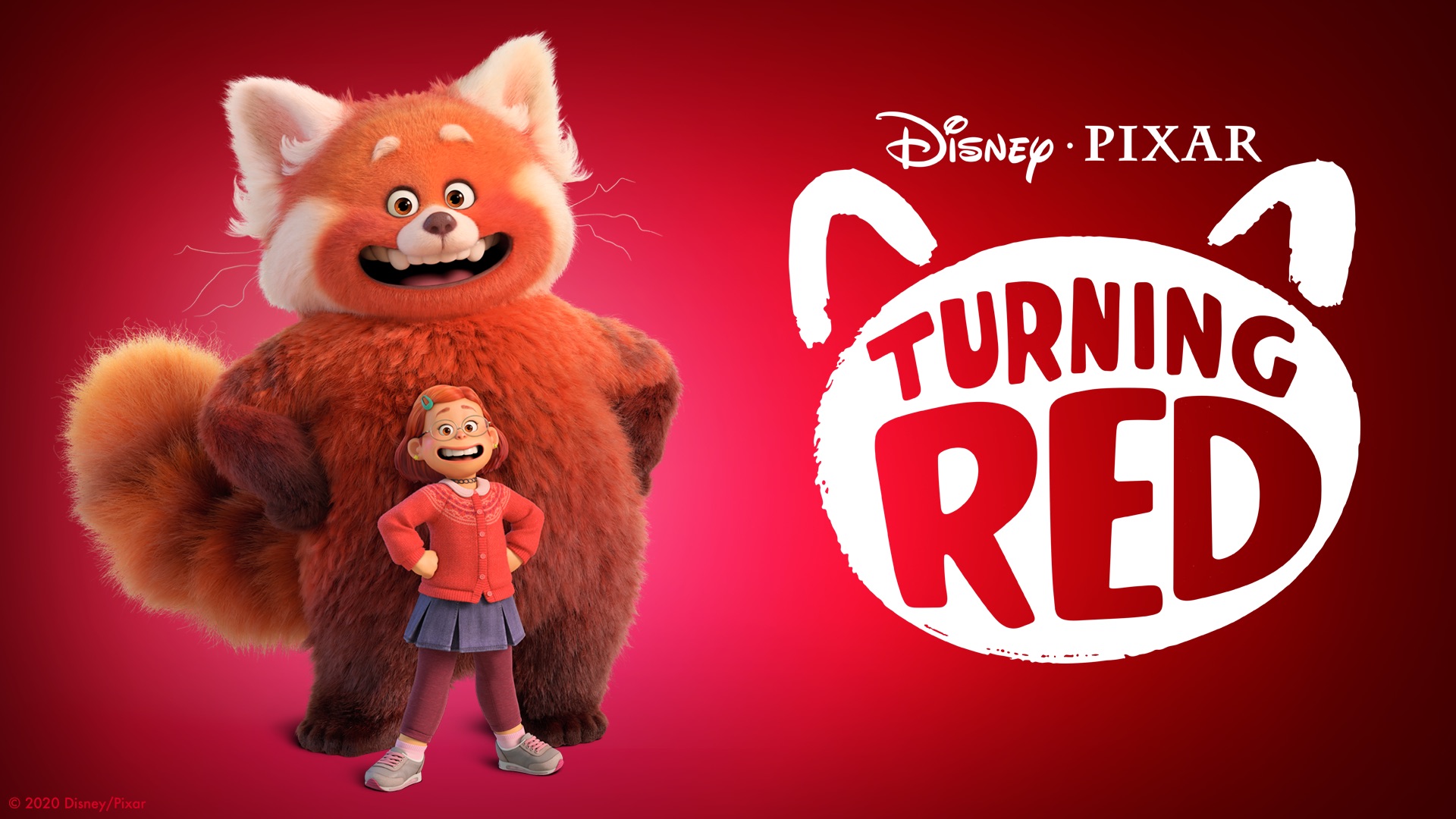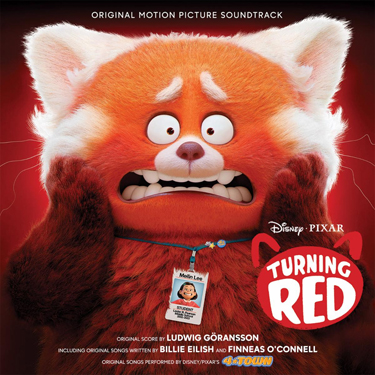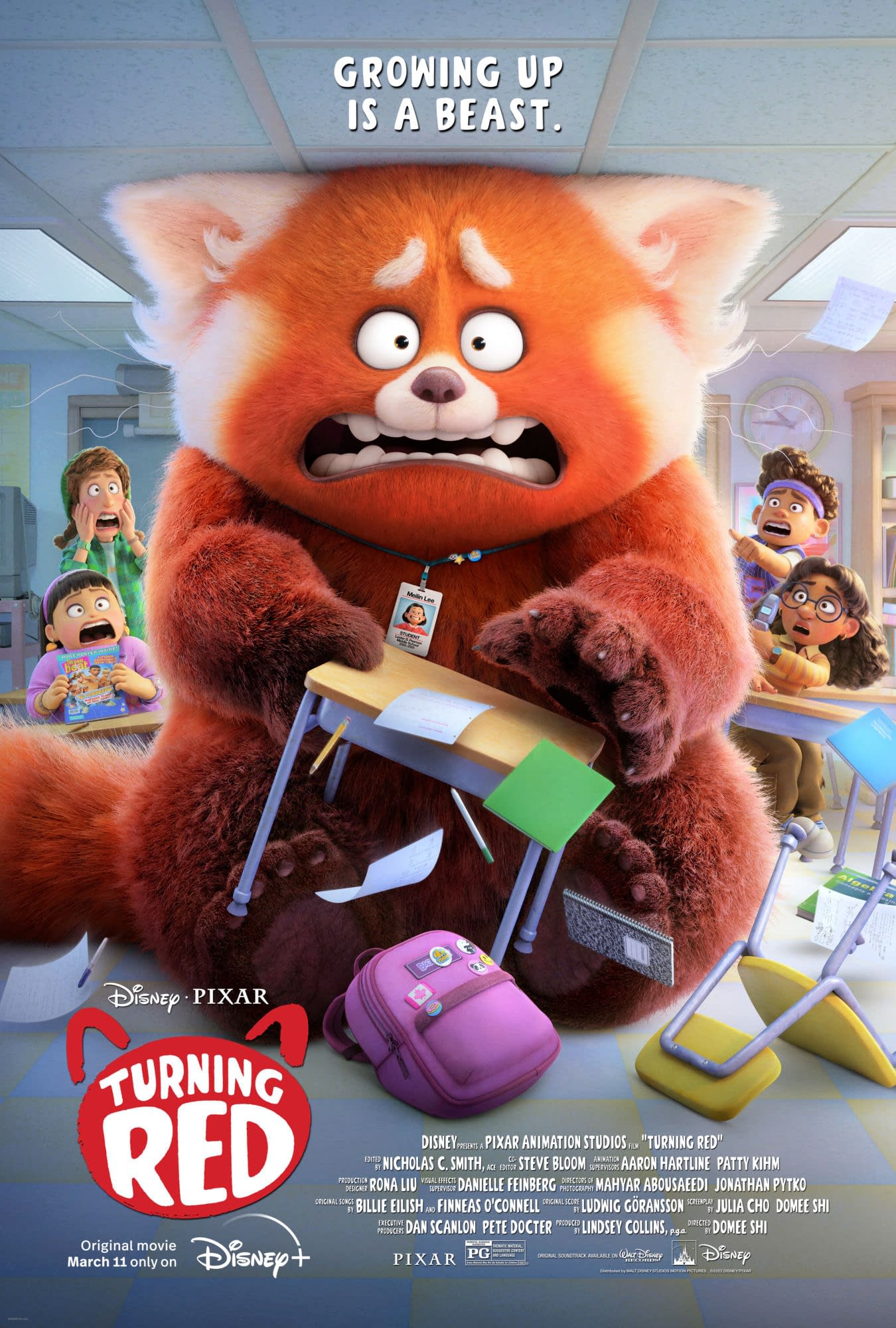March 11, 2022
Disney & Pixar’s Animated Fantasy TURNING RED A Fun Mix of Ludwig Göransson’s Score and Boy Band Songs by Billie Eilish & Finneas O’Connell

TURNING RED is a 2022 American computer-animated coming-of-age fantasy comedy film produced by Pixar Animation Studios and distributed by Walt Disney Studios Motion Pictures. It is directed by Domee Shi in her feature directorial debut, from a screenplay written by herself and Julia Cho. The film stars the voices of Rosalie Chiang, Sandra Oh, Ava Morse, Hyein Park, Maitreyi Ramakrishnan, Orion Lee, Wai Ching Ho, Tristan Allerick Chen, and James Hong. It is the first Pixar film to be solely directed by a woman, the first to take place in Canada, and the second to feature an Asian lead character after UP. TURNING RED tells the awkward but beloved story of Mei Lee, a 13-year-old girl who is torn between being her mother’s obedient daughter and the chaos of her youth. As if that were not enough, when she gets too excited, she turns into a big red panda whenever she gets too excited.
The TURNING RED Original Motion Picture Soundtrack features 3 original songs written by Billie Eilish and Finneas O’Connell, with score by Oscar®-winning composer Ludwig Göransson, and is now available

TURNING RED SCORE: The music for TURNING RED is a fun mixture of score and song. The film’s original score is the work of Ludwig Göransson, best known for scoring Disney’s Marvel film BLACK PANTHER and the STAR WARS TV series THE MANDALORIAN and THE BOOK OF BOBA FETT. According to Göransson, the score to TURNING RED is eclectic—a musical representation of what it might feel like to be a teenager in the early 2000s. “The score is a clash of cultures as well as a clash between the older generation and the new,” he says. “The clash in musical styles also represents Mei’s internal struggle with her own identity. But these conflicts push her forward into her journey of self-discovery.”
The film is, of course, Mei’s story, so the composer wanted the score to reflect the inner turmoil of a teenager who’s entering adolescence. “There are heightened emotions such as fear, confusion and excitement,” says Göransson. “Throughout the score, I switched genres frequently, almost like a mixtape made by a 13-year-old. Traditional Chinese instrumentation, a 75-piece orchestra, elements of New Jack Swing and ’90s boy band all reflect the confusion in Mei’s mind as she struggles to comprehend what her parents want for her and what she wants for herself. She loves the traditions of her family but she wants to put a new spin on it. I tried to encapsulate that idea through the score.”
Göransson created character-specific themes for Mei, her mother, Ming, and a third for the red panda. “Mei’s theme is represented by the flute,” he says. “At the beginning of the film, Mei’s theme alternates between the western flute and the dizi [a traditional Chinese flute made of bamboo], to reinforce the split in her sense of self. Ming’s theme is represented by the guzheng [Chinese plucked stringed instrument],” continues Göransson. “Her theme is traditional, nostalgic and always there to remind Mei of the love that she has for her daughter.”
As for the red panda theme, the composer describes it as “quirky, grotesque and awkward.” And, like the other themes, the red panda theme incorporates an ancient Chinese instrument, the bianzhong, which is a set of bronze bells to highlight, according to Göransson, “the heightened uncertainty of Mei’s chaotic, emotional state.” In addition to the dizi, guzheng and bianzhong, Göransson incorporated other traditional Chinese instruments, including the pipa, a pear-shaped stringed instrument; the erhu, a two-stringed Chinese fiddle; and Chinese opera percussion. These instruments were used to underscore the Lee family heritage and their mystical connection to their ancestor Sun Yee. “Some of these instruments were played traditionally or often unconventionally,” says Göransson, “to reflect the dichotomy of her cultural identity.”

TURNING RED SONGS: According to TURNING RED director Domee Shi, if you set a 13-year-old girl’s coming-of-age story in the early 2000s, it’s pretty much mandatory to include a boy band. Enter Pixar’s first-ever boy band, 4*Town. GRAMMY-winning Music Producer and President of Walt Disney Music Tom MacDougall arranged a meeting with the TURNING RED filmmakers and singer-songwriters Billie Eilish and Finneas O’Connell. “When deciding what musical artists to meet with on our films, we don’t look to who’s the most popular, but who’s best suited to the creative needs of the project,” says MacDougall. “In the case of Billie and Finneas, we were lucky to have both.”
Adds producer Lindsey Collins, “We met with them and pitched this crazy idea of a boy band, asking if they’d be interested in writing and producing the songs. They were!” Boy band music, says O’Connell, “is really like a masterclass in simplicity and memorability. It’s a really catchy melody, harmonies, claps and choreography. It’s so infectious and appealing with these young heart-throbby teens who the kids can’t help but fall in love with.”
Göransson has incorporated the 4*Town songs into the score to make it all feel part of the same musical world. “I used a lot of the same sounds and synths that were inspired by the Cheiron studio—the Swedish studio that established the ’90s boy-band sound,” he says. “The boy band is a part of Mei’s identity, so it was important to weave that sound into the score.”
Stream Disney and Pixar’s TURNING RED exclusively on Disney+ now.
Watch the TURNING RED Trailer:




